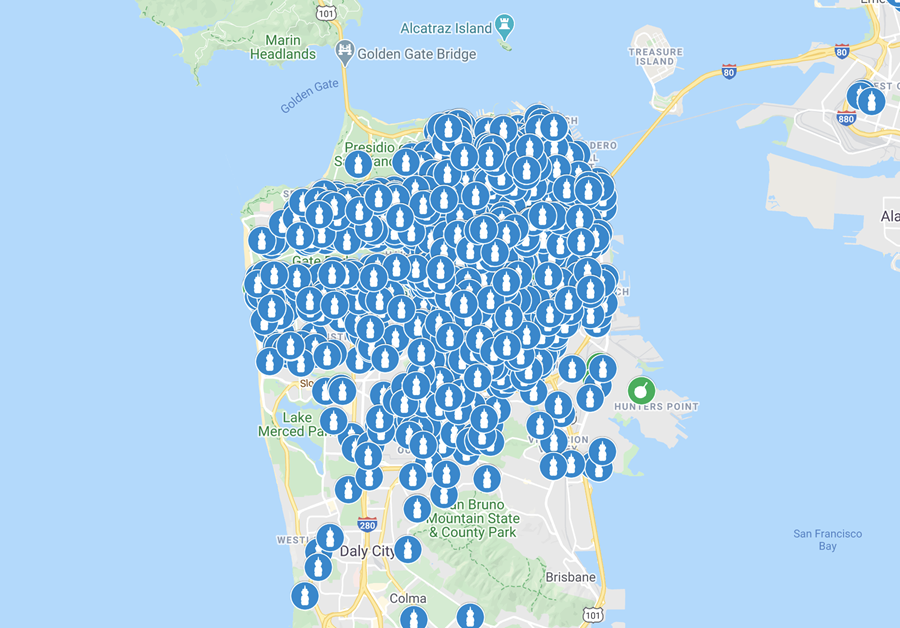 StencilArchive.org has seen other shared stencils images of George Floyd, and Breonna Taylor, on the stencil subreddit. We were glad to come across Twin Cities artist Seitu Jones' #Blues4George project, since Jones includes templates and instructions for a simple or multi-color stencil portrait. Go to Jones' site for more details, and to download a pdf how-to via Google Drive.
StencilArchive.org has seen other shared stencils images of George Floyd, and Breonna Taylor, on the stencil subreddit. We were glad to come across Twin Cities artist Seitu Jones' #Blues4George project, since Jones includes templates and instructions for a simple or multi-color stencil portrait. Go to Jones' site for more details, and to download a pdf how-to via Google Drive.
#BLUES4GEORGE
How To Create Your Own #Blues4george:
Create your own stencils of any size with the 4 patterns provided. Pick up shades of blue paint and memorialize George Floyd in the streets and on the boarded up storefronts across the United States and beyond. Depending on size and paint supplies accessible to you, there are many ways to create a #blues4george portrait.
Materials You’ll Need:
Cardboard/Foamcore/Paper/
Something you can cut out!
Spray Paint/Acrylic/Chalk/Markers/
Something with the color blue!
OPTION 1: EASY
One shade of blue paint
1. Download the stencil from tiny.cc/b4gE
2. Print the stencil out or trace it on some spare cardboard
3. Cut along the lines and remove the hatched areas using a utility blade, Xacto knife, or scissor
4. Start painting!
OPTION 2: CHALLENGING
Five shades of blue paint
1. Download the 5 stencils from tiny.cc/b4gC
2. Print the stencils out or trace them on some spare cardboard
3. Cut along the lines and remove the hatched areas using a utility blade, Xacto knife, or scissor
4. Start painting Layer 1 with your lightest blue, making your way up to Layer 5 and up to your darkest blue!
SOME TIPS!
You can mix 5 shades of blue with just one jar of blue and one jar of white paint, and a brush you can scale your paintings up using a projector and a marker to trace onto some scrap cardboard, or print on a bigger paper. Shop local when possible!
REMEMBER!
Get permission from local businesses, organizations, and building owners to place a portrait on their boarded up windows. Get permission for sidewalks, walls, or other locations across your neighborhoods.
Take photos and share your results on social media. Be sure to tag it #blues4george and @seitukjones
Yours in solidarity,
Seitu
 The Honey Bear Hunt map is now live at fnnch.com/honeybearhunt!
The Honey Bear Hunt map is now live at fnnch.com/honeybearhunt! 
 Support by: Josiah, Joelle, Jaime Rojo and Brooklyn Street Art, r/stencils, r/streetart, r/gratefuldead, @only_stencil_archive
Support by: Josiah, Joelle, Jaime Rojo and Brooklyn Street Art, r/stencils, r/streetart, r/gratefuldead, @only_stencil_archive
 Support by: Devin and Eleni, Chris C, Queer Eye, Xsacto, @graffitiradical, r/stencils, r/streetart, @only_stencil_archive
Support by: Devin and Eleni, Chris C, Queer Eye, Xsacto, @graffitiradical, r/stencils, r/streetart, @only_stencil_archive StencilArchive.org has seen other shared stencils images of
StencilArchive.org has seen other shared stencils images of